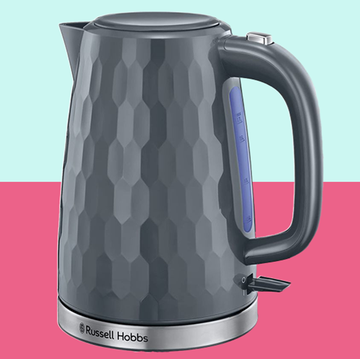Let’s be honest – no one likes cleaning the toilet. Even with the longest rubber gloves and the sturdiest toilet brush, few will jump for joy at the prospect (unless the floor is covered with splashback). We’d rather have it done in the blink of an eye, gleaming as it did when it was new. Sadly, it’s not that easy. In fact, when you get down into the nitty-gritty chore of scrubbing the seat, some stains just won’t budge.
This is made all the more obvious if you’re dealing with a white, plastic toilet seat: limescale, urine and… ‘other’ occasional stains can remain (especially beneath the seat). Even cleaning products can leave their mark. They look disgusting when the lid’s up, but just won’t shift, even with intense scrubbing. You end up getting the worst off, closing the seat and trying not to think about it – but it doesn’t have to be this way! With just one household product and the right technique, you can restore your toilet seat and say goodbye to those unspeakable stains. Here’s how:
How to remove yellow stains from your toilet seat
Before you begin, make sure chlorine bleach isn’t sitting in your toilet as you attempt to clean the seat. It’s dangerous to inhale the fumes and you don’t want chemicals mixing as you clean the seat.
What to read next
First, if you’re dealing with particularly stubborn stains that are hidden beneath the seat, remove the seat from the toilet entirely. This sounds crazy, but if you apply a cleaning solution while the seat is up, it will just run off and not have time to work. By removing the seat and lying it upside down, you have better access to stain and more power to remove it. Plus, this gives you a chance to clean beneath the seat on the toilet itself, an area that you usually can’t reach.
Modern toilet seats have quick-release buttons under the lid, where it’s attached to the bowl. You push these outwards at the same time and pull up to lift the seat free. Have an old towel on your floor at the ready for the seat to be placed upside down. If your seat isn’t so easy to remove, don’t worry, you can still proceed to the next step.
Now, you need to mix up your cleaning paste. The solution is something that has many uses all over the home – we’re talking about good old-fashioned bicarbonate of soda. When mixed with water, this alkaline is brilliant for shifting grease and grime, and its abrasive nature makes it ideal for scrubbing. Simply combine a couple of drops of water with your bicarb to create a paste and you’re all set. You’re looking for a thick and gloopy consistency. You don’t want it to dry out too quickly, but you need it thick enough to stick in place.
Bicarb is best for plastic and enamel toilet seats; for wood, stick to warm soapy water or it could degrade the finish.
With your rubber gloves on and your seat ideally removed and inverted, apply the paste directly to the stains with a microfibre cloth, covering the marks completely – alternatively, you can drip it on to the stain if you find that easier. If your seat remains attached to the toilet, you’re going to have to dab the paste on and check it sticks in place (you can add more bicarb to the mix to thicken it up). You won’t get as good a coverage, but it will still work its magic.
Leave for 20 minutes, then check the progress by rubbing it with a damp microfibre cloth. If you find the stains have faded, scrub away what remains and then spritz with water to rinse the excess bicarb. You can use an old toothbrush, an electric cleaning brush or even a cotton ear bud to reach into awkward spaces.
If the stain persists, reapply the bicarb and leave for another 20 minutes, repeating the process as necessary. You should notice stains gradually fading with time.
How often should you replace your toilet seat?
If the stains really won’t shift, it might be time to replace your toilet seat. There’s no exact rule on how often you should be doing this; it depends on a lot of factors, including use and the material, both of which feed into how long it will last.
Generally speaking, most toilet seats will last from between five to seven years before needing to be replaced. If the seat becomes wobbly, cracked or shows up stains you just can’t budge, that’s a sign that it’s started to degrade.



















